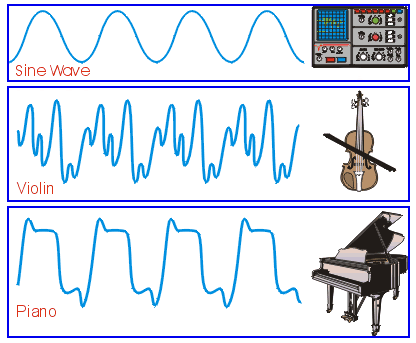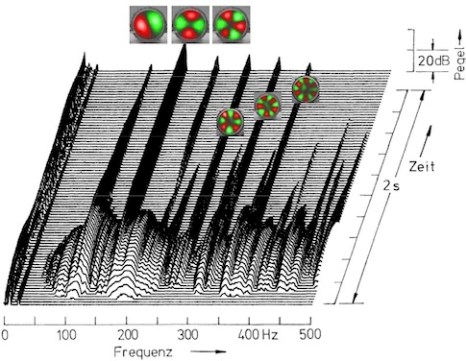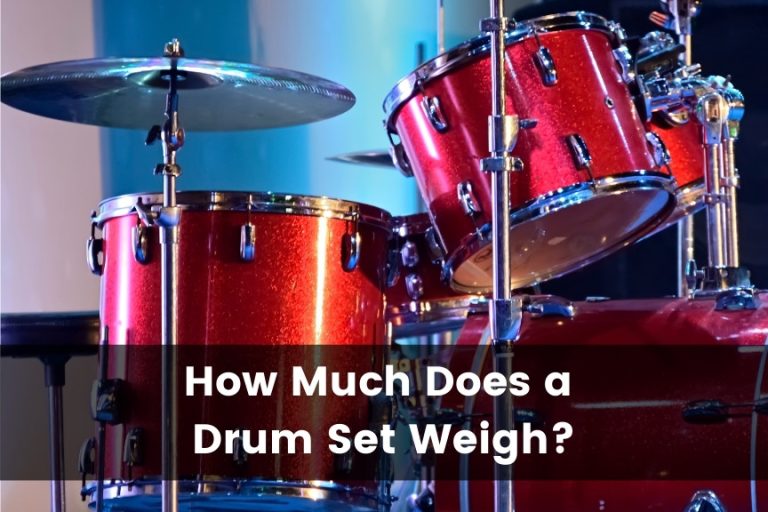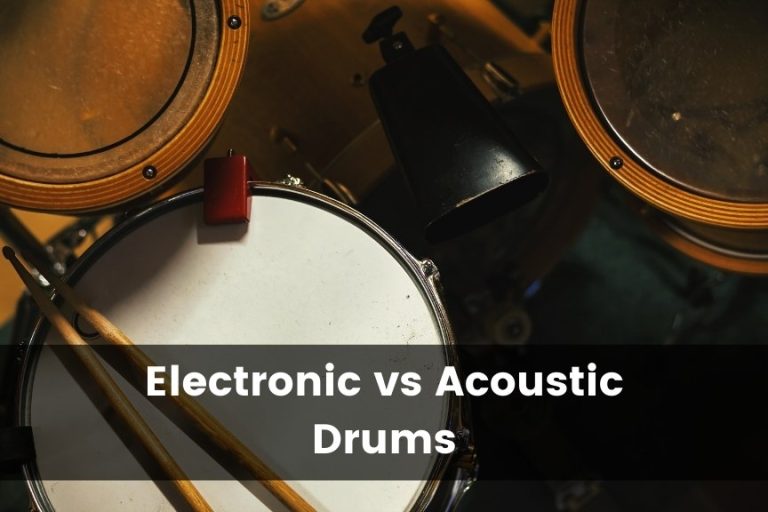Can Drums Play a Melody?
Often, we wonder about drummers who have a whole range of different toms set up within their huge drum kit, and especially, how on earth they are using all of them and make it sound enjoyable.
Physically, drums are capable of playing a melody, and some drummers also use their kit as a melodic instrument. But due to the drums’ overtones, it doesn’t feel like listening to harmonic notes because they don’t match the defined pitch that we expect to hear from a melodic instrument.
There is some exciting science behind the explanation to this question.
Physical Insight on Drums and Melodies
Instruments generally not only create a single frequency at one time. By playing a single note on a melodic instrument (e.g., the piano, wind or string instruments), many different frequencies are produced at once – a whole spectrum is generated. However, this spectrum is not accidental. It follows reasonably precisely the harmonic series that you can imagine as the “ideal” levels that these frequencies might have.
All the higher, often weaker frequencies generated are known as overtones. As long as the overtones align with the harmonic series, the result will sound harmonic, and we will have the feeling of listening to just one even note or pitch. One example of a waveform that is generated by a violin as well as piano with its sine wave pendant is shown here:

However, if you hit a drum, its frequency spectrum will be quite different from that of the harmonic series. Indeed, you often hear one loudest single frequency. Yet, the overtones don’t really conform with what you might be expecting to perceive from a melody instrument (like the piano in the example).
The result is that we do not have a similar feeling of hearing a single and well-defined pitch. Rather, it sounds more like a dull impact instead of a clearly defined pitch. This is why it would be far harder to recognize a melody played on a drum set than on a piano., also known as inharmonicity. The single stroke of a timpani makes such a spectrograph:

What Are Overtones?
Some might say, overtones describe the noise that you wouldn’t want to hear when hitting a drum. But it’s not necessarily that. Because all drums, as well as cymbals, produce overtones, and not all of them are frankly bad. Instead, they are an integral part of any instrument’s sound.
Simply put, an overtone is the additional harmonics that can be heard over and beyond the key tone. When you hit a drum, the basic note is generated by the impact when the stick is first struck on the drumhead. The overtones are the resulting harmonics that you hear afterward. They can sometimes be really terrible. However, even a well-tuned drum will still produce overtones.
On the topic of harmonic vs. disharmonic overtones: Instruments that have an effectively one-dimensional sound generating mechanism (e.g., a violin or a pipe organ) tend to produce harmonic overtones. In contrast, instruments that are two-dimensional (e.g., drums) are prone to produce disharmonic overtones.
Requirements to Play Melodies on Drums
Drum Set
In order to play melodies on drums properly, you should have a proper amount of drums available on your drum kit, but there is not a hard limit to how many toms you should have. Of course, it’s possible to play certain melodies with just two additional toms, besides the snare and bass drum, like on a jazz drum kit.
But if you want to have the capability to experiment with various pitches, the motto is:
“The more toms you have, the more freedom you have to experiment.”
Techniques
When having fewer toms, like on a jazz kit, the drummer has to compensate the number of drums for accommodating all the different pitches. Usually, the drums are tuned before a performance and cannot really be re-tuned on the spot.
However, a drumhead can be tweaked to produce higher pitches through creative applications of putting pressure or bending the drumhead. Jazz drummers use this technique called “melodic drumming”.
As an example, to play higher pitches on the snare drum after loosening the snare wire, the drummer presses down his elbow on the snare. The more pressure is put on the drumhead, the higher the pitch will be. With this technique, it’s only possible to reach a higher pitch by tensioning the drumhead. Producing a lower pitch is not possible unless you loosen the lugs.
In contrast to having fewer drums, drummers can also have a massive drum kit with a vast number of different drums that are all tuned to a specific note so that melodies can be played on them more easily. With that, you don’t have the difficulty of having to bend the drumhead just so much that you reach the desired tone, since you have most of the notes there already and ready to play.
In What Context is it Used?
Melodic drumming is very much used in jazz drumming, in the context of playing within a band, as well as it’s utilized in the art of playing drum solos.
Ari Hoeing and Alvin Atkinson are two examples of drummers who use melodic drumming on their jazz kits. Ari Hoeing is one of the most well-known drummers in that niche. This is a video of him performing Billie’s Bounce. You can see him in the intro as he pushes the drums down to increase the tension and create a higher pitch. As the main melody starts at 1:53, you can watch him playing what is actually the melody of that song. You can see this, but compared to the saxophone, it is a lot more challenging to tell which notes the drums are playing.
On the other hand, there are drummers like Terry Bozzio, who have a massive drumset with a variety of different drums, enabling them to play even more complex melodies. In contrast to Ari Hoeing, Terry Bozzio uses melodics more withing the context of his rhythm and textures, not as a means to play a melody as most of us would define it.
In the following video, you see Terry Bozzio performing a solo on his huge drumset, utilizing the melodic drumming style, with the additional integration of rhythmic textures:
Should Drummers Consider to Make Use of This Nowadays?
I would say it depends on the intended use of the drums. Currently, the rock and pop drumming genre is prevalent and makes almost no use of melodic drumming. When it comes to jazz drumming, though, the probability of melodic usage is higher.
Generally, speaking of whether drummers should make use of this nowadays, I think there is no guideline as to what is right as what is wrong. As long as it fits the music and is fun to play for all involved, go for it!
When it comes to solo playing on a drumset with many differently tuned drums, I would say it makes sense to consider using the drumset to generate melodies. But only to the extent that melodies are combined with other rhythmical textures because I imagine it will sound boring, too shallow, or monotonous when rhythmic key elements are missing.
With having a big drum kit comes the need to consider that it takes some money to invest in upgrading or even completely purchasing that kit plus the additional time to maintain all the tunings. But on the upside, however, you’ll enjoy great freedom to experiment with different melodies and rhythm.
In the end, there is no right or wrong, but rather “do what you like”. When everybody does what he likes, there will always be various drumming styles, drumsets, and drummers that are artistic enough to keep that creative art of music alive.







